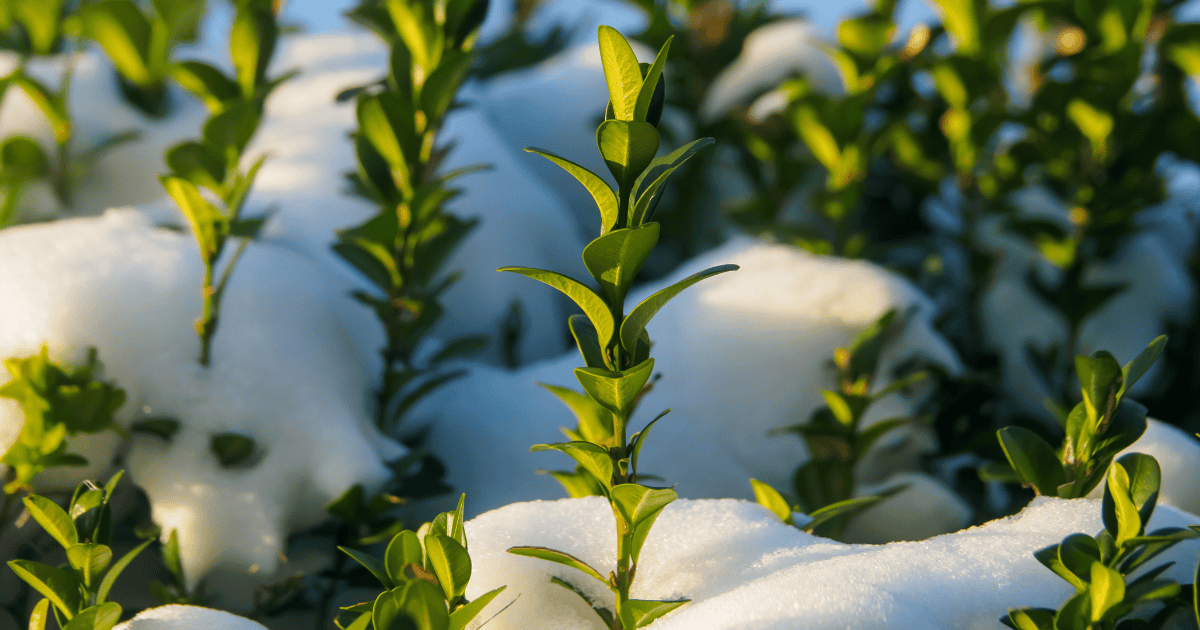
Learn the best way to trim boxwood shrubs in formal and informal gardens.
Boxwood plants are widely used to add structure and definition to gardens. Whether they are sculpted into formal shapes and hedges or allowed to grow into their natural form, boxwood shrubs benefit from annual pruning to encourage healthy growth. Pruning also helps to maintain a cleaner profile and limit plant size. Learn when and how to prune Better Boxwood shrubs to maintain the form of individual plants and keep knot gardens, borders, and boxwood hedges looking their best.
Boxwood Types and Pruning Needs
The pruning needs of boxwoods depend on the types of boxwood shrubs you grow and your aesthetic goals. A boxwood hedge or topiary plant, for example, requires more intensive pruning than shrubs maintained in their natural form. Plant variety also plays a role. Several Better Boxwood varieties were selected for their compact habit and slow growth. Babylon Beauty™ and Renaissance™ maintain their shape with very little pruning.
The more upright varieties Heritage™ and Skylight™ can be grown in their natural form, but also respond very well to shaping into spheres, spirals, or pyramid forms. Such formal shaping requires a heavier hand when it comes to pruning. To minimize your pruning needs, be sure to match the variety of boxwood you select to your gardening goals.

When to Prune Boxwood Shrubs
Time your pruning activity according to the technique you are using. The best time to thin boxwood plants is late winter to early spring before the new growth emerges. This timing is also helpful for addressing winter damage, as boxwoods often require some pruning in spring to remove foliage damaged by severe weather. Dead, diseased, and damaged branches can be removed at any time and should be pruned out as soon as you notice them.
Topiary plants, boxwood hedges, and other plantings maintained through shearing also benefit from thinning in early spring. Wait to shear plants until after the first flush of growth, usually around early June. This two-step pruning is more work but will ensure your sheared plants maintain a healthy canopy. Avoid both types of pruning in late summer and early fall, as pruning encourages a flush of new growth that may not have time to harden off before winter.

Pruning Overgrown Boxwood
Large boxwood shrubs and those that have not been pruned for many years may require more drastic pruning to reduce their size. Use loppers or hand pruners to make a series of pruning cuts in late winter or early spring, removing no more than one-third to one-half the canopy at a time. You may need to do this over two or three seasons if severe pruning is needed. Remove a portion of the stems in the first season and an equal amount in subsequent years until the desired size is reached. This ensures plants still have plenty of foliage to produce the energy they need. Boxwoods will put out new growth from bare stems, but plants may take a few years to fully recover.
Pruning plays an important role in maintaining plant health. Annual pruning helps maintain a healthy environment within the plant canopy, reducing the incidence of disease by increasing light and air penetration. Pruning is also necessary to maintain formal boxwood forms. Start by selecting the most appropriate Better Boxwood variety to meet your needs. The right cultivar can make a big difference when it comes to pruning needs.


